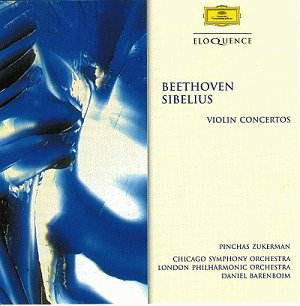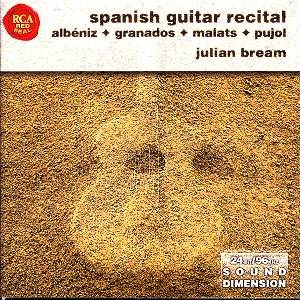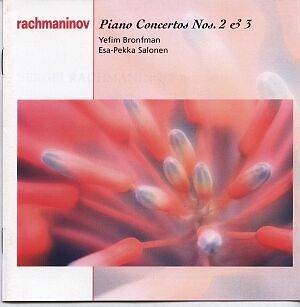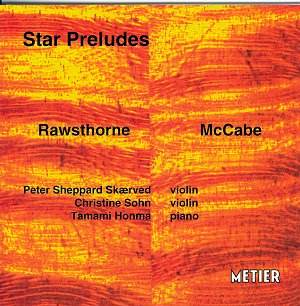 Composer: Ludwig van Beethoven
Composer: Ludwig van Beethoven
Works: Violin Concerto in D major, Op. 61; Jean Sibelius, Violin Concerto in D minor, Op. 47
Performers: Pinchas Zukerman (violin), Chicago Symphony Orchestra (Op. 61), London Philharmonic Orchestra (Op. 47)
Recording: 1977 (Op. 61), 1975 (Op. 47)
Label: Eloquence DG 457 294-2
The Violin Concertos of Beethoven and Sibelius occupy prominent places in the repertoire, both renowned for their lyrical depth and technical demands. Beethoven’s Op. 61, composed in 1806, heralds a new era for the violin concerto, bridging the Classical and Romantic styles, while Sibelius’s Op. 47, penned in 1904, embodies the nationalistic fervor and lush harmonic language of early 20th-century Finland. This coupling of two giants of the violin repertoire, performed by the distinguished Pinchas Zukerman and conducted by Daniel Barenboim, presents a compelling listening experience that is richly deserving of attention.
Zukerman’s interpretation of Beethoven’s Violin Concerto is characterized by a robust, full-bodied sound that captures the work’s grand architecture. The performance opens with a hushed, almost mystical atmosphere, the timpani strokes establishing a sense of expectancy before the soloist’s entrance. Barenboim’s conducting elicits long, sweeping phrases from the Chicago Symphony, reminiscent of the great conductors of the past, such as Wilhelm Furtwängler, with an emphasis on harmonic development rather than mere detail. The orchestra’s first tutti is a vivid tapestry of sound, and the oboe’s phrasing of the second subject is particularly noteworthy, delivering a sublime contrast to Zukerman’s rich tone. The slow movement unfolds with an exquisite blend of sonority and lyrical beauty, showcasing the violin’s capacity for expressiveness, while the rondo finale, although slightly less buoyant than one might wish, is nevertheless delivered with a commitment that resonates powerfully.
Transitioning to Sibelius, the performance reaches an even higher level of interpretive insight. Here, Barenboim’s control of tempo is masterful, allowing for a spacious yet urgent unfolding of the opening dolce ed espressivo. The orchestral fabric, with its rocking quaver figuration, creates a palpable sense of mystery and grandeur. Zukerman’s handling of the cadenza is particularly impressive, demonstrating both technical prowess and interpretive sensitivity. The climactic moments in the slow movement are delivered with a granite-like heft, underpinning the emotional weight of the music. The final movement bursts forth with an exhilarating energy, Zukerman’s fiery articulation propelling the work to its triumphant conclusion.
The engineering quality of this recording is commendable, capturing the nuances of both the soloist and the orchestral body with clarity and depth. The resonance of the violin’s tone is vividly reproduced, allowing listeners to appreciate the full range of Zukerman’s expressive capabilities. Although the liner notes are somewhat lacking in detail, the music speaks volumes, making this disc particularly appealing to both seasoned aficionados and newcomers alike.
The synergy between Zukerman and Barenboim brings a notable depth to these performances, providing fresh insights into both concertos that invite repeated listening. While alternative recordings, such as Hilary Hahn’s interpretation of Beethoven, offer different perspectives with their own merits, Zukerman’s approach is both intelligent and musical, making this reissue a significant addition to the catalogue. Each concerto is treated with the gravity and respect it deserves, resulting in an enriching experience that highlights the unique qualities of both composers. This disc stands as an exemplary representation of the violin concerto repertoire, marrying technical excellence with profound musicality.



